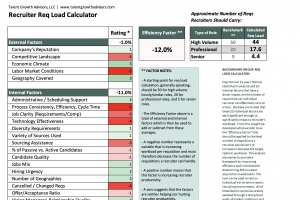The Power of a Diversity & Inclusion Audit: Three Keys to Success

In the world of accounting, an internal audit is a preemptive way to mitigate risk and identify opportunities for improving financial and management effectiveness. These efforts can be of critical importance to the sustainability of an organization.
Isn’t it high time we applied the same level of proactive discipline to diversity and inclusion efforts? For far too long, D&I functions in countless companies have been minimized or sidelined - often under-resourced with a sole figurehead - and limited in their reach, intent and ability to affect change. All this while the business case proves the opposite: building a diverse, high-performing workforce allows companies to attract top talent, build intellectual capital and create enterprise value.
And even if that isn’t reason enough, the heat is on. In recent months, organizations ranging from small non-profits to giant global brands dove into "brand activism" by touting their allegiance to the quest for racial equality and the idea that Black lives matter. It doesn’t take a high degree of cynicism to question the motivations, other than craven marketing attempts, particularly when - while these campaigns were running - some companies were also actively supporting opposing efforts. Even the advertising agencies that have created the most memorable (and impactful) media campaigns have a “stunning lack of diversity” among their workforce.
For leaders determined to improve representation among their employee ranks, the only place to start is an objective, expert audit of current diversity and inclusion efforts and outcomes. Only after this step can an organization create an actionable plan that prioritizes the needs across hiring, retention and promotional activities. Without such a plan, diversity becomes everyone’s (and simultaneously) no one’s - responsibility.
As a leader in data-based, objective audits across the talent continuum for organizations ranging from complex global organizations to mid-cap high growth firms across dozens of industries, we offer these recommendations for auditing your D&I practices.
1. Gain Senior Leader Buy-in
Talk to the CEO and his/her direct reports in one-on-one conversations, using any company-sanctioned diversity statements, advertisements or plans. Are they satisfied with current efforts to hire and retain a high-performing diverse workforce? What do they mean - specifically - when they think about “diversity” - Black employees? LatinX? Women? Veterans? Older workers? This is the time to drive toward honest and specific dialog. What do they most want to improve: attracting, hiring, promoting, retaining, etc.? In what parts of the business or at what levels? Do they have access to the workforce diversity data they’d like? How much of a priority is improving this, compared to all other business priorities? Are they willing to personally sponsor and invest in efforts to improve results? If the answer is yes, then proceed.
2. Engage Objective Expert Auditors
Finding the right resource to conduct a D&I audit is a challenge, given that it’s a new and unique capability. It requires a blend of traditional audit capabilities - business acumen, data analytics, process rigor - with talent expertise - the understanding of how effective, unbiased attraction, selection and retention practices should work. To make it happen? Use internal resources (those who are not responsible for the very practices being audited, of course) or hire a team like ours.
3. Use a Rigorous and Disciplined Approach
Our approach includes eight elements that are critical to conducting a thorough audit of Diversity and Inclusion practices:
- Business and Talent Strategy
- Diversity and Inclusion Culture
- Talent Attraction
- Talent Selection & Hiring
- Talent Development
- Talent Engagement and Retention
- Compensation and Rewards
- Talent Metrics & Measurement
For each, we combine a structured review of both qualitative and quantitative data. The former includes one-on-one interviews with senior and key stakeholders; a review of in-scope talent programs, practices and policies, social media and employment marketing efforts, and targeted focus groups. The latter includes an analysis of typically three years of hiring, internal movement and attrition data, surveys of leaders and employees regarding diversity efforts and effectiveness, and compensation and reward data.
Ultimately, the goal is to identify the D&I priorities, in concert with senior leadership, followed by the creation of a plan of action that is data-based, realistic and time-bound. Because resources are limited, identifying the most critical D&I priorities will be essential to moving the needle in a measurable, value-added way.
Contact us to learn more about our approach and deliverables.
Share this Article
Learn more about our unique approach to Talent Strategy Formulation.



